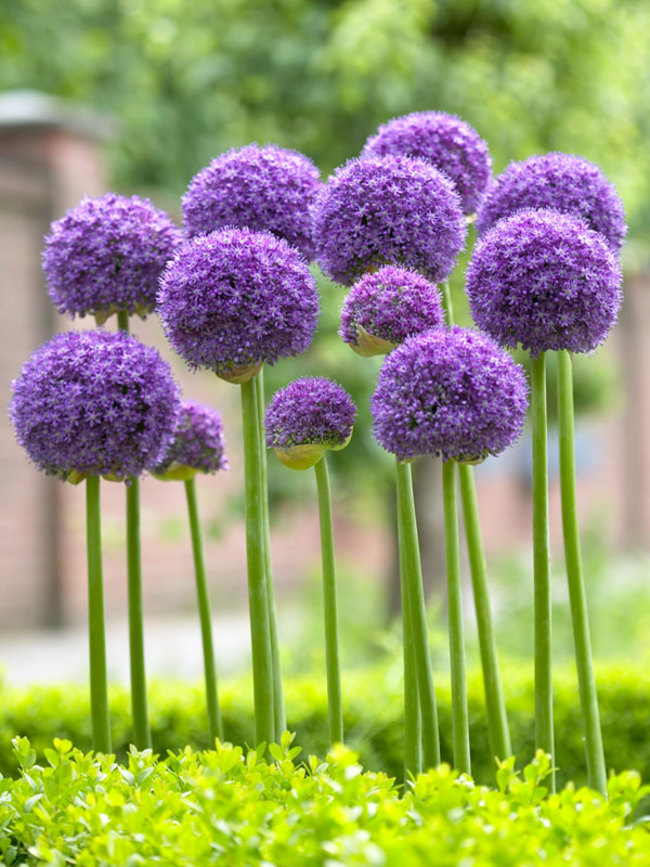12 MOSQUITO REPELLENT PLANTS
Most insect-repelling plants do so with their natural fragrances, which keep annoying mosquitoes away and introduce wonderful scents throughout your garden. If you don't want to douse yourself or your garden in chemical bug sprays you can grow some of these plants to help keep mosquitoes away naturally. Plant these plants in areas where guests will be often such as by a seating area or a doorway.
12 Plants to Use as a Natural Mosquito Repellent
#1. Lavender
Have you ever noticed that insects or even rabbits and other animals have never decimated your lavender plant? It is because of their lovely fragrance, which comes from its essential oils that are found on the leaves of the plant. It is even argued that lavender oil hinders a mosquito’s ability to smell! This plant is very tough and drought-resistant once established, and only needs full sun and good drainage. And while it can endure many climates, it thrives in warmer areas.
#2. Marigolds
Marigolds, an easy-to-grow annual flower, emit a smell that deters mosquitoes. Grow them in pots and place them near your patio or entrance to your home to keep bugs out. Marigolds are also a popular addition to borders and vegetable gardens. According to NYBG, not only can they keep away mosquitoes, but they also dissuade aphids, thrips, whiteflies, Mexican bean beetles, squash bugs, and tomato hornworms.
#3. Citronella Grass
Known for its distinct smell, citronella grass is the most commonly used natural ingredient in mosquito repellants. In fact, the Brooklyn Botanic Garden recommends lemon-scented plants such as citronella grass to keep mosquitoes at bay. And the good news is that the living plant is the most effective at repelling pests. This low maintenance plant does best in large planters because it cannot withstand frost, but in warmer climates, can be planted directly a sunny area in the ground. Also, when buying Citronella, make sure you buy Cybopogon nardus or Citronella winterianus, which are true varieties.
#4. Catnip
Catnip (catmint) can be found thriving almost anywhere. It is from the mint family and grows abundantly both as a commercial plant and as a weed. It is very easy to take care of and may even start to invade other areas of your garden. However, if you are willing to forgo this plant’s insidious nature, they are amazing mosquito repellants and another recommendation from the BBG. In a study at Iowa State University, catmint was found to be ten times more effective than DEET, the chemical used in most insect repellants.
#5. Rosemary
Another great mosquito repellant is rosemary. Both the New York Botanical Garden and PlantShed recommended this plant. Rosemary is an herb that many of us are very familiar with and their woody scent is exactly what keeps mosquitoes as well as cabbage moths and carrot flies away. They do best in hot and dry climates and thrive in containers, which may be ideal for areas with winters. They can also be pruned into all sorts of shapes and sizes and make great borders or decorations. While the pests stay away you can enjoy the herb’s scent and also use it to season your cooking.
#6. Basil
Basil is another herb that can also double as a pest repellent. The pungent smell the basil leaves give off are what keep pests at bay. And since all kinds of basil work to keep flies and mosquitoes at bay, feel free to explore and find the right types of basil to mix into your garden. This herb likes to be kept damp, needs good drainage, and enjoys lots of sun. You can plant basil in containers or in the garden, alone or with other flowers, as long as both plants meet the same requirements.
#7. Scented Geraniums
Scented geraniums seem to be a popular mosquito repelling plant. Recommended by PlantShed, BBG, and NYBG, the favored scent seems to be lemon scented, which is reminiscent of citronella grass. They are beautiful blooms with a strong fragrance that keep several types of pests away. These fast growing plants like warm, sunny, and dry climates, but if you are in a cold climate area, they can be grown in planters with constant pruning.
#8. Bee Balm
Want to attract good bugs like bees and butterflies, while deterring the bad ones? Then bee balm, also known as Monarda or horsemint, is the plant for you. Simply crush its leaves to release the fragrant oils. Plus, you’ll get to enjoy colorful flowers, in shades of red, pink, lavender, white, or purple, all summer long.
#9. Mint
Mint is an excellent nontoxic option for keeping mosquitoes, flies and even ants away. The more pungent the aroma, the less bugs you’ll have. Grow it in pots on your patio where it can be easily reached if you want to drop a leaf or two in your afternoon tea. You can even dry the leaves and use them inside your home as a natural pest control method.
#10. Floss Flower
This attractive annual flower makes great bedding or container plants. Floss flower contains coumarin, a chemical that helps repel mosquitoes—but, also makes it toxic if ingested by pets or humans.
#11. Sage
If you love gathering around a fire pit in your backyard, then plant some sage nearby. Toss some of the plant into the flames and its earthy smell will ward off bugs. Sage can also be dried and used to make homemade bug spray.
#12. Allium
These bulbs, which include garlic and onions, release a strong fragrance that mosquitoes don’t like. You’ll enjoy the whimsical globe-shaped flowers of allium that seem to float atop long slender, stems.







No comments